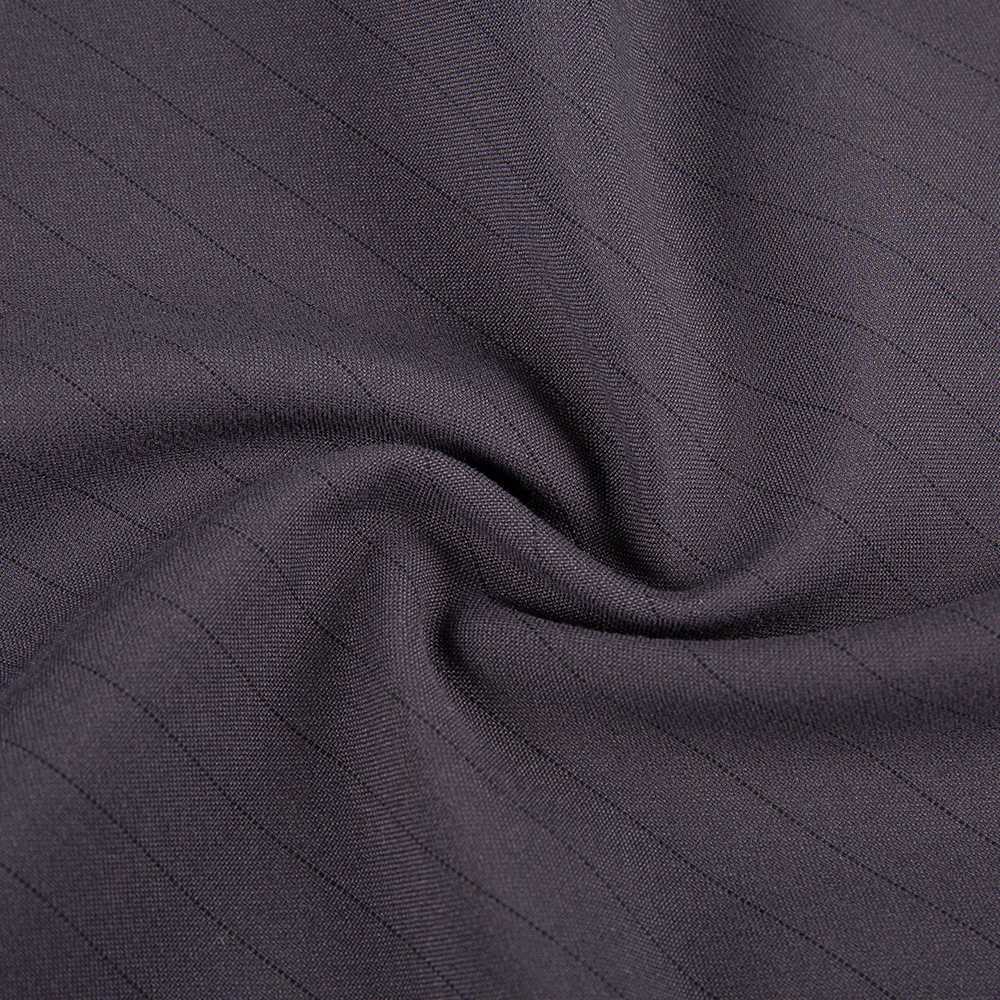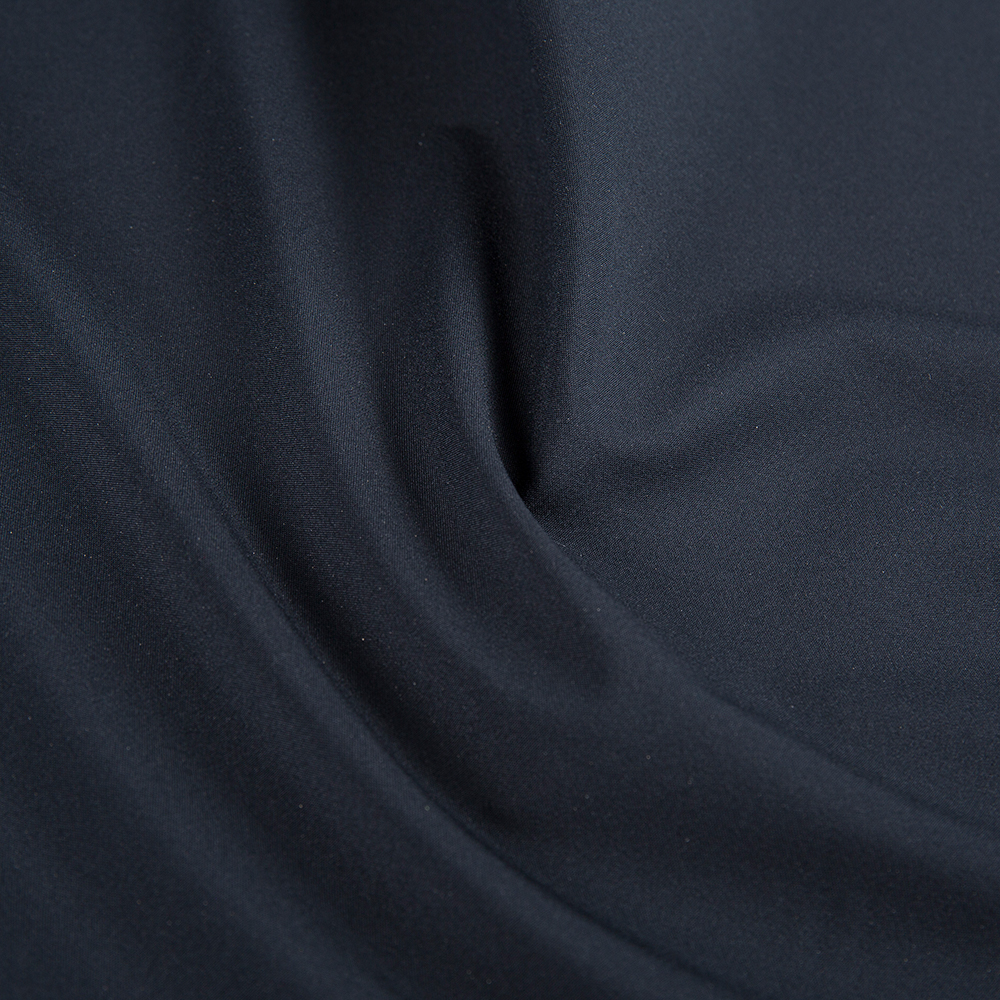Web Menu
Product Search
Industry news
Twill Weave Protection Code: Structural Mechanics and Waterproof Mechanism of Waterproof Gabardine Work Jacket Fabric
The excellent protective performance of waterproof gabardine work jacket fabric is essentially derived from the deep integration of precision twill weave and material science. During the weaving process, the warp yarns are closely arranged in a uniform and high-tension state to build a strong longitudinal support skeleton. This warp yarn structure enhances the tensile strength of the fabric along the length direction, making it less likely to deform and break in complex working scenarios. The weft yarns shuttle between the warp yarns at a specific angle, and the two are interwoven to form a unique diagonal pattern. Compared with plain weave, twill weave can achieve a tighter arrangement at the same yarn density, and the yarn coverage per unit area is higher. This unique weaving method makes the surface of the fabric present a dense and tough wear-resistant layer. When the fabric is scratched by sharp objects or rubbed for a long time, the wear-resistant layer can effectively disperse the external force, protect the internal structure from damage, and greatly improve the durability of the fabric.
Mechanism of strengthening mechanical properties
The synergistic effect of warp and weft yarns further strengthens the mechanical properties of the fabric. The warp yarn provides high-strength support in the longitudinal direction, while the weft yarn forms a stable connection and constraint in the transverse direction. The warp and weft interweaving is like building a dense mechanical network. In actual use, when the work jacket is pulled by external force, the interaction between the warp and weft yarns can quickly disperse the stress and avoid local excessive force causing damage to the fabric. This warp and weft structure also gives the fabric good wrinkle resistance. During the wearing and folding process, the friction between the warp and weft yarns interacts with the elastic deformation, so that the fabric can quickly return to its original shape after being deformed by force. Even after frequent wearing and washing, the waterproof gabardine work jacket fabric can still maintain a crisp shape and continue to provide reliable protection for the wearer.
The formation principle of waterproof performance
From a microscopic level, in the twill weave of the waterproof gabardine fabric, the tight bite of the warp and weft yarns constructs an extremely small pore structure. The size of these pores is much smaller than the diameter of water molecules, forming a natural physical waterproof barrier. When rainwater contacts the surface of the fabric, water molecules are difficult to penetrate into the fabric due to the limitation of the pores, thereby initially blocking the invasion of water. On this basis, the yarn of the fabric is treated with a special water-repellent finishing process. Through chemical coating or padding, a layer of low surface energy material is formed on the surface of the yarn to reduce the surface tension of the yarn surface. This prevents water droplets from infiltrating and spreading when they contact the surface of the yarn, but shrinks into beads. As the weight of the water droplets increases, they naturally roll down under the action of gravity, further isolating the moisture, ensuring that the fabric can remain dry in a humid environment and providing good waterproof protection for the wearer.
Fusion of tradition and modernity
The waterproof gabardine work jacket fabric perfectly combines traditional weaving technology with modern material science. After hundreds of years of inheritance and improvement, the traditional twill weaving technique has laid a solid structural foundation for the fabric; while modern material science technologies such as water-repellent finishing and fiber modification have further expanded the performance boundaries of the fabric. This fusion is not a simple superposition, but through the precise control of weaving process parameters and in-depth research on material processing technology to achieve the optimization of protective performance.
RELATED PRODUCTS
- Textiles
- > Cosplay Fabrics
- > Outdoor and sports series
- > Work Jacket Fabrics
- > Down Jacket Fabrics
- > Women's Wear Fabrics
- > Anti Static And Dust-Free Clothing Fabrics
- About BANYAN
- > Our Story
- > Innovation & Testing
- > Certificate
- Contact
- Address:No.2, Jinlun textile garden, 3rd south ring road, Shengze Town, Wujiang District, Suzhou
- Phone: +86-13913093109
- Email: [email protected]

 English
English 中文简体
中文简体











